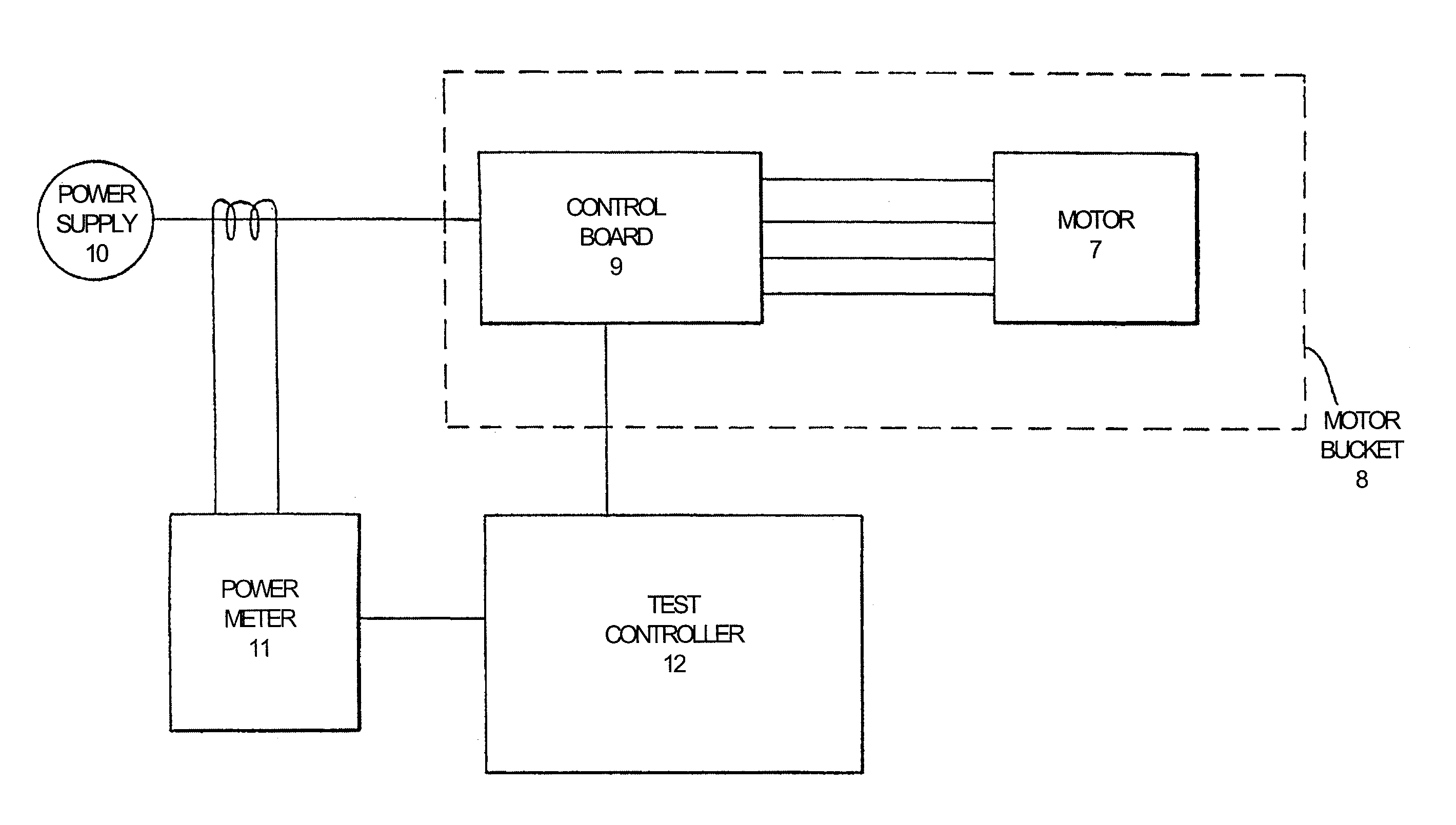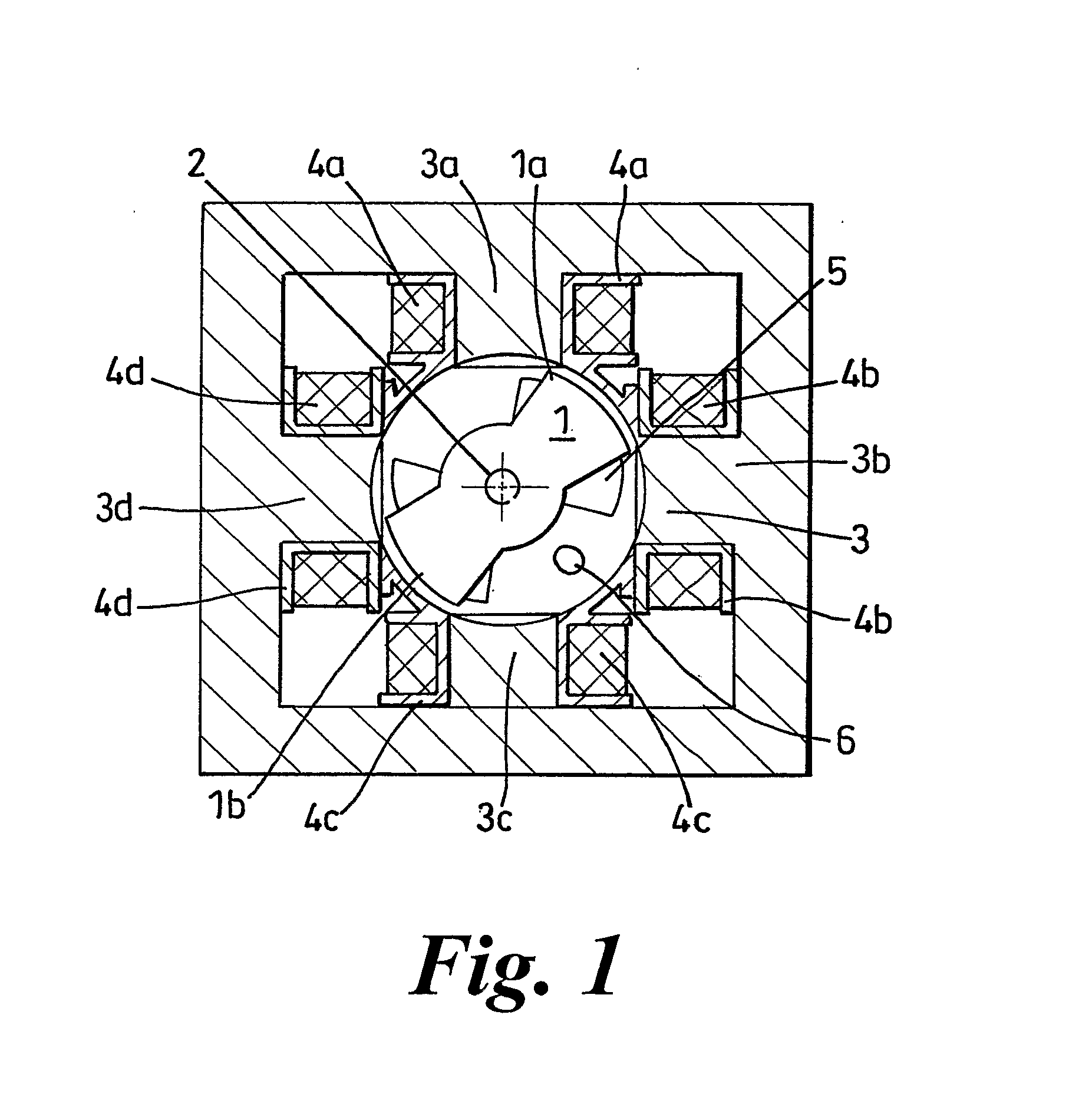Control of electrical machines
a technology of electrical machines and rotors, applied in the direction of electronic commutators, dynamo-electric machines, synchronous motor starters, etc., can solve the problems of large memory requirements, difficult control of rotors at such high speeds,
- Summary
- Abstract
- Description
- Claims
- Application Information
AI Technical Summary
Benefits of technology
Problems solved by technology
Method used
Image
Examples
Embodiment Construction
[0022]Like reference numerals refer to like parts throughout the specification.
[0023]FIG. 1 is a cross-sectional view of a typical switched reluctance motor. It comprises a rotor 1, mounted on a shaft 2 and a stator 3. The rotor 1 comprises an axially laminated stack of steel plates, arranged to form a pair of poles 1a, 1b. The stator 3 comprises a stack of steel laminations arranged to have, in this example, four inwardly projecting salient poles 3a, 3b, 3c and 3d. Opposing poles 3a and 3c each support a winding 4a, 4b which together form a first phase. The other diametrically opposite poles 3b and 3d similarly accommodate respective windings 4c and 4d, which represent a second phase. Each winding 4 comprises a large number of turns (e.g. 50+ turns) of an insulated electrical conductor around the respective stator pole.
[0024]In use, energisation of the phase windings is controlled in order to effect rotation of the rotor. Thus, it is imperative that the rotational position of the r...
PUM
 Login to View More
Login to View More Abstract
Description
Claims
Application Information
 Login to View More
Login to View More - R&D
- Intellectual Property
- Life Sciences
- Materials
- Tech Scout
- Unparalleled Data Quality
- Higher Quality Content
- 60% Fewer Hallucinations
Browse by: Latest US Patents, China's latest patents, Technical Efficacy Thesaurus, Application Domain, Technology Topic, Popular Technical Reports.
© 2025 PatSnap. All rights reserved.Legal|Privacy policy|Modern Slavery Act Transparency Statement|Sitemap|About US| Contact US: help@patsnap.com



